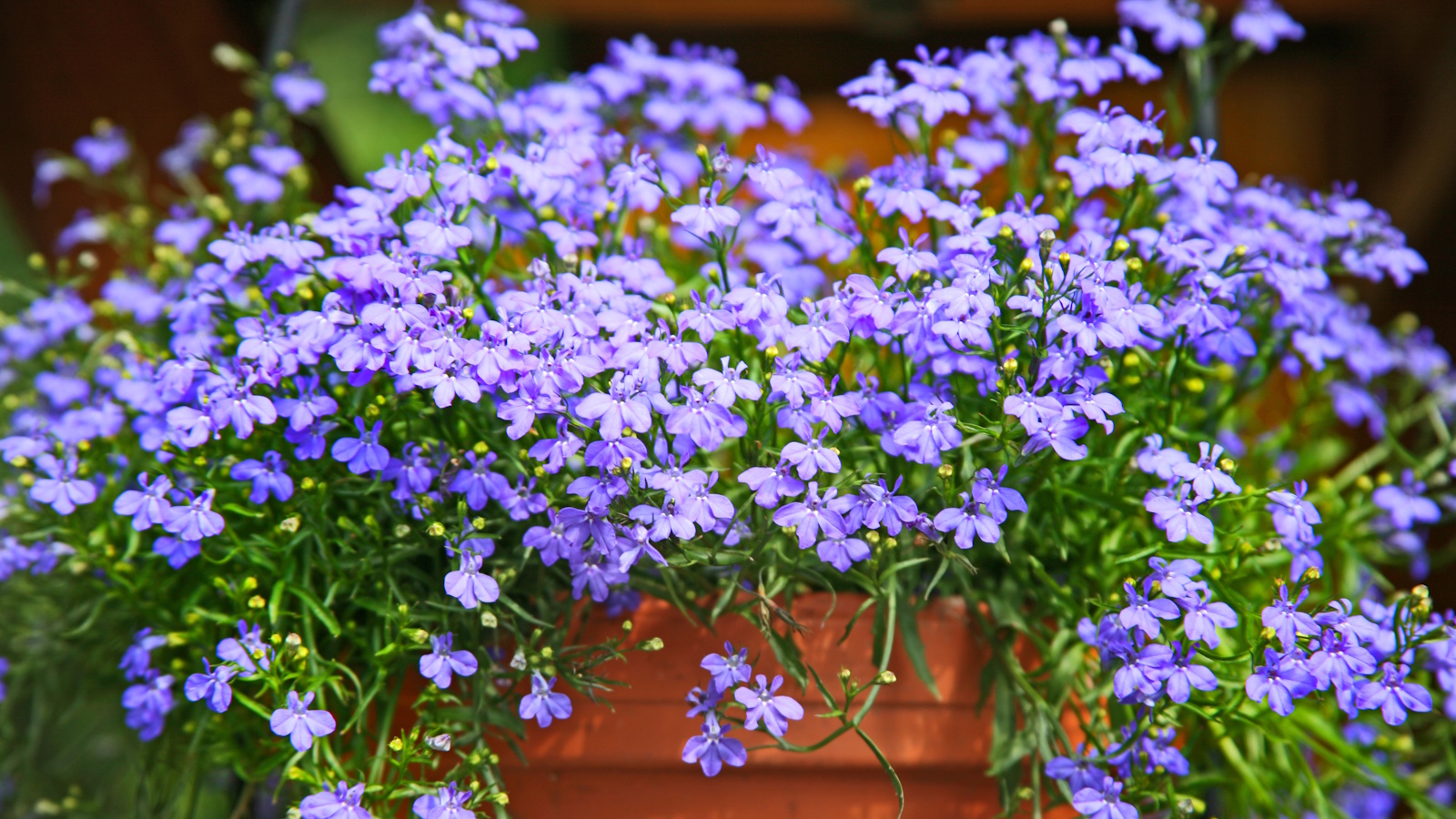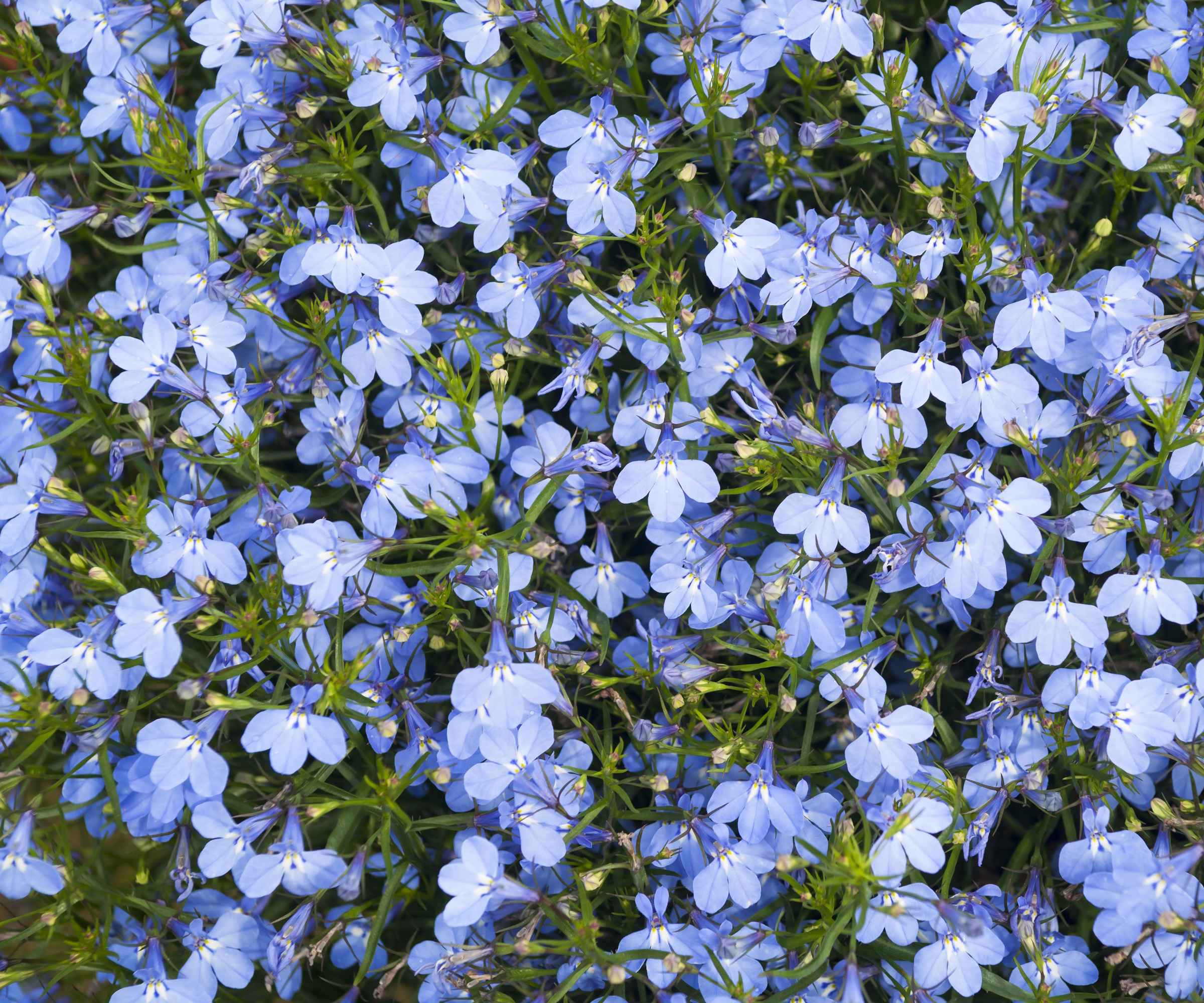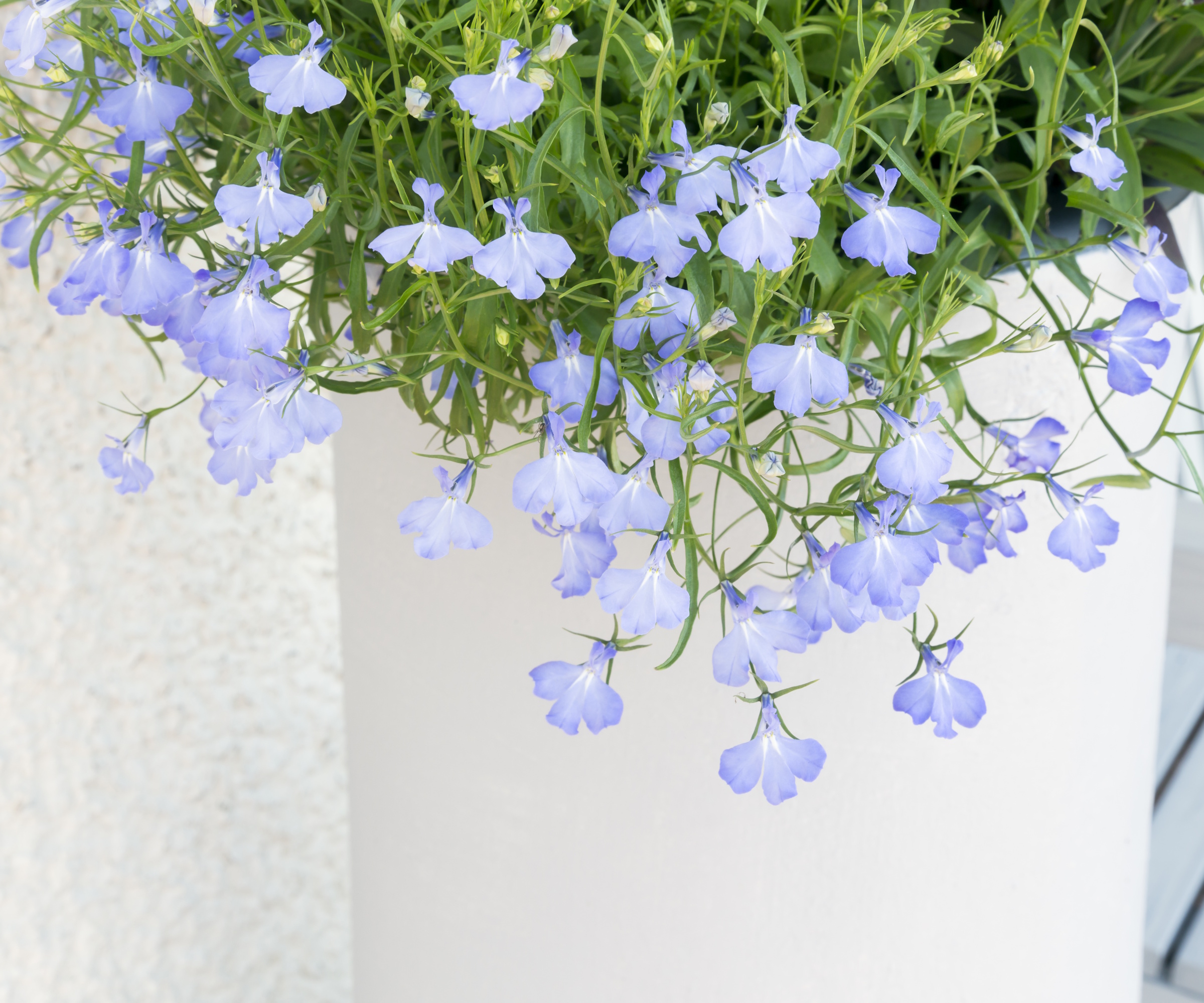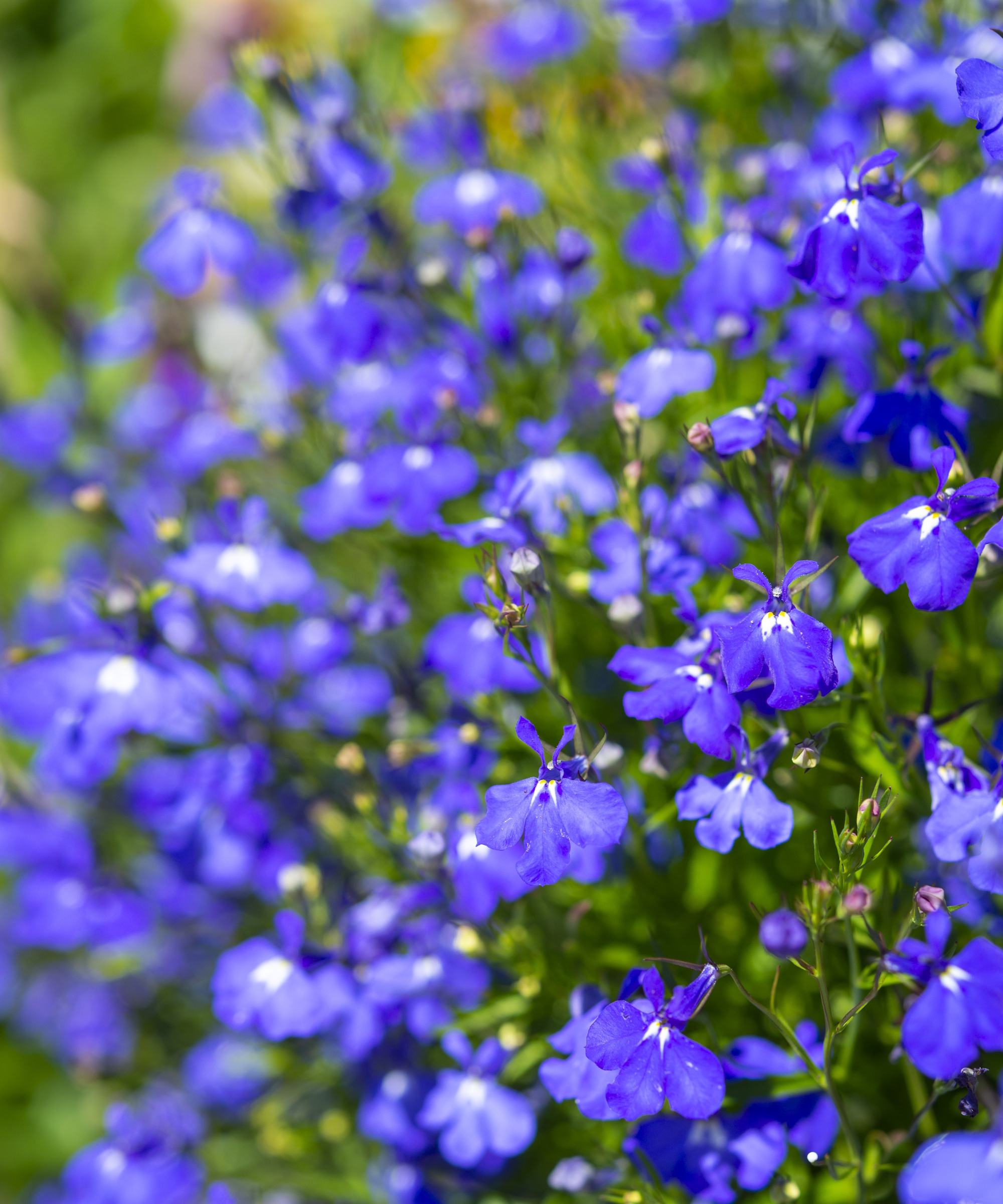How to grow blue lobelia – expert tips for incorporating this vivid annual into yards and containers
Lobelia erinus shimmers in shades of blue; a rare color in the garden.


The color blue is pretty rare in nature, but the blue of lobelia (Lobelia erinus) is on the mark. This vibrant, low-growing annual brightens garden beds, borders, pots and even hanging baskets. It’s a favorite of gardeners and designers for its compact yet trailing habit, making it a star along walkways and mixed containers.
Native to southern Africa, the annual lobelia actually thrives in cooler climates, providing a much-need pop of blue from spring through early summer, and once again in fall. Lobelia thrives in full sun to partial shade and is a reliable bloomer with regular watering. As a USDA zone 2-10 seasonal annual, it’s best kept out of extreme heat. Give it cooler climates or partial shade and it’ll bloom happily.
While it has gained popularity as a so-called spiller or cascading plant in mixed containers, lobelia is one of the best ground cover plants around. And with a color as rare in the garden as blue, it’s one that’ll stay in your annual repertoire for years. We spoke with an experienced horticulturist about how to use lobelia to your advantage in the garden.

How to grow blue lobelia
The appeal of lobelia, other than its vibrant blue flowers, is its masses of small, fan-shaped flowers. The blooms are densely clustered over mounding stems, with its fine-textured light green foliage peeking through to provide a fresh but soft backdrop.
Add in its tidy appearance and continuous blooms and it’s one of the cheeriest flowering plants in the garden.
Growing habits of blue lobelia

Annual lobelia adds a charming, cottage-garden elegance to any setting. ‘Typically, I see annual blue lobelia cultivars used in pots and planters or as an edging plant in beds and borders,’ says Justin Hancock, a horticulturist for Costa Farms in Miami, Florida.
‘Some cultivars have a trailing habit, making them excellent choices as spillers in container gardens; others are more compact, making them a colorful choice for the front of beds and borders. I particularly enjoy the trailing varieties in window boxes and hanging baskets.’
Design expertise in your inbox – from inspiring decorating ideas and beautiful celebrity homes to practical gardening advice and shopping round-ups.
Blue lobelia is an example of an “and” plant – it adds beauty to a garden and it has a second function as a pollinator plant.
‘Blue lobelia is pollinator friendly, but in my gardens, I haven’t seen as much pollinator action with the annual varieties as I do the perennial species (Lobelia cardinalis and Lobelia siphilitica),’ Hancock says.
‘Bees and butterflies do visit annual blue lobelia, and I assume hummingbirds do, too – I just haven’t had the pleasure of witnessing it!’
Find live starter plants of Lobelia cardinalis at Walmart.
As for varieties to consider when shopping the garden center, Hancock has been dazzled by the variety ‘Super Star’ with big white centers surrounded by a purple blue. ‘The Hot series has performed well, too,’ he says. ‘I’m partial to the deep colors like ‘Hot Royal Blue’ and ‘Hot Dark Blue’.’
QVC has beautiful plant containers of all sizes, that are perfect for housing lobelia.

Justin Hancock is a horticulturist at Costa Farms, where he helps home gardeners across the country to successfully grow and care for a wide variety of plants, indoors and out. He's passionate about plants and has gardened across the country from Minnesota to Oregon to South Florida.
Care guide for blue lobelia

- Soil: 'Like pretty much everything else, a moist, well-draining soil rich in organic matter is optimal,’ Hancock says. ‘Annual blue lobelia doesn’t have great drought tolerance, so organic matter (and mulch) can be really helpful in sandy soils.’
- Light: Hancock says full sun or part shade is best for blue lobelia. ‘The more sun it gets, the more it blooms until temperatures start to get really hot,’ he explains.
- Watering: 'Blue lobelia prefers to be evenly moist, similar to a lot of other annuals like petunia, calibrachoa, and sweet alyssum,’ Hancock says. He notes that keeping it well watered encourages more consistency of bloom.
- Fertilizing: Hancock says that if you have a good-quality soil with good organic matter content, you may not need to fertilize. ‘But if you’re growing in a container, then regular fertilization, or fertilizing once or twice with a time-release fertilizer, can also help encourage better blooming,’ he adds. ‘Any general-purpose product is fine – lobelia doesn’t need anything specialized or fancy.’ Find premium granular fertilizer at Amazon.
- Toxicity: Lobelia does have a minimal level of toxicity, according to Hancock. ‘Lobelia does contain naturally occurring compounds that help protect it from predators in nature,’ he explains. Keep your lobelia out of reach of children or pets that may be inclined to nibble.
- Pests: Because of those naturally occurring chemical compounds that protect it from grazing, lobelia is generally considered resistant to deer and rabbits. ‘Keep in mind that resistant doesn’t mean it’s deer- and rabbit-proof,’ Hancock explains. ‘There may be individual animals who don’t mind an upset stomach. And it’s pretty common for pests to sample plants after you plant them because they’re new to the neighborhood.’ Hancock does say that slugs and snails are more of a danger to lobelia than deer and rabbits.
FAQs
Which type of lobelia come back every year?
‘Species like Lobelia cardinalis are hardy up to zone 3 (and L. siphilitica to zone 4), whereas Lobelia erinus, the blue lobelia, is only perennial in subtropical regions (zone 10),’ horticulturalist Justin Hancock explains.
'That question used to be more straightforward, but now with strains like the Starship series that are hardy to zone 6, it’s more important to look at the tag or research the variety name to see if it’s hardy in your area.’
How tolerant is blue lobelia to sun and shade?
Blue lobelia does best in all-day sun, but not if it’s a hot-weather area. It’ll do best with some shade, especially in the afternoon. This helps extend its bloom season.
‘I’ve used it in shade gardens in the past, under trees that get dappled shade all day, and while it wouldn’t bloom as profusely as it would have in the sun, it still provided a pop of color to accent my heuchera, hosta, brunnera, and other shade perennials,’ Hancock notes.
Lobelia is one of those plant-and-enjoy flowers, with little pruning or maintenance needed. You can trim it back if it starts to get lanky or dishevelled, and deadheading isn’t required at all.
For more inspiration for adding that rare color to your garden, check out our guide on how to grow blue flowers, including the exotic Himalayan blue poppy, one of the bluest flowers in existence.

Ellen Wells is a horticultural communications consultant with 30 years experience writing about all aspects of the gardening world, and for GardeningKnowHow.com since 2024. She specializes in retail horticulture, vegetable gardening and tropical plants. Ellen is based in southern New England where she gardens in zone 7a.